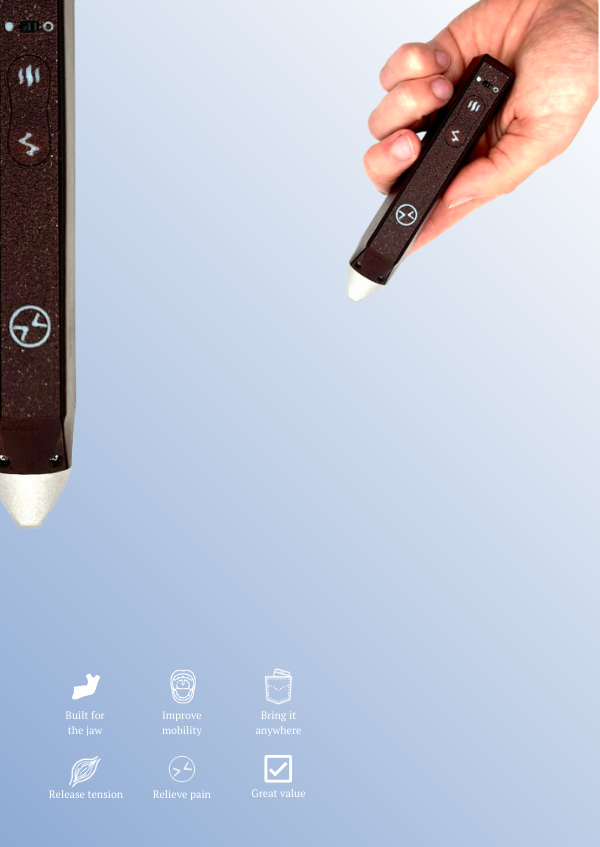The Gender TMJ Gap - Why Women's Jaws Hurt More

I’m sure you somewhat know that women have more jaw pain than men. But did you know that women are almost TWICE as likely to get TMJ Disorders as men? That’s simply too big of a trend to chalk up to coincidence.
As an important note, TMJ is heavily understudied, so while many websites will find it easy to throw explanations at you as fact, the truth of the matter is that most things surrounding TMJ including treatments, exercises, causes and even statistics are completely unproven. This is why doing as much of your own research as possible is vital if you want to understand your TMD.
As a brief background, TMJ Disorders (TMD) are dysfunctions of the jaw around the Temporomandibular Joint. These dysfunctions can cause severe muscle tension in the jaw and temple (therefore headaches), jaw pain, ear-aches, tinnitus, jaw popping, and lockups. Here’s some more info https://mytmjrelief.com/blogs/mytmj-blog/okay-so-whats-tmj
It affects up to a third of the population, mostly between the ages of 20-40, however more like 5% of the population has it bad enough to seek treatment. And yes, incidence in women is 1.5-2 times that in men.
The golden question here is why?
Off the bat, here’s the most common explanation floating around on the internet: It’s hormones.
Specifically, estrogen. The baseline reasoning for this is because estrogen plays a large part in pain processing and inflammation signaling within the brain. Additionally, there are estrogen receptors found in the jaw. Seems like there’s something there…
But the weird part is that pain-perception is actually lower when estrogen levels are higher. Studies done on women before and after menopause show that TMJ pain increases once estrogen levels have lowered. The same is true for inflammation - it’s inhibited with high levels of estrogen. On top of that, if estrogen levels were indeed the cause, then wouldn’t HRT (Hormone Replacement Therapy) be a viable treatment option? Well some studies have taken a look at this as well, and there is very little evidence that this is the case.
The fact that lower estrogen contributes to more TMJ pain is also contrary to the numbers that show higher incidence of TMJ in younger adults.
So maybe it’s the fact that women go through hormonal swings more often? After all, pain is relative; so when taking things like birth control, or going through menstrual cycles, or pregnancy, there comes with it lower and higher periods of pain.
For example, there have been a lot of women that have TMJ flare ups during their period. This is because estrogen levels dip in that phase of the cycle, which is associated with higher levels of inflammation.
As you can tell the evidence for estrogen being the root cause isn’t as good as top Google results show it to be. But even if it did explain some of the higher occurrences in jaw pain, how would it explain more physiological symptoms like jaw clicking.
Most studies we found were in agreement that jaw clicking and bruxism (clenching - less a symptom and more a common link) were included in the symptoms that are found more common in women than men.
So the next possible cause on our list is one people with TMJ hate to hear - stress response.
Basically the idea here is that women not only deal with higher statistical levels of stress and anxiety, but also have higher levels of physiological response to stress, i.e tensing jaw muscles/clenching.
Let’s take a further look. Bruxism(clenching) while awake has a strong link with emotions like stress, anger, and anxiety. However in sleep bruxism more or less doesn’t have that same connection. So that should mean that women should experience awake bruxism at a higher rate than men, while in sleep bruxism should be mostly equal. And indeed several studies have shown this to be true.
And as we know, overstimulation of the TMJ muscles can lead to painful muscle knots as well as tension that may lead to further jaw misalignment and disc displacement. Read https://mytmjrelief.com/blogs/mytmj-blog/jaw-pain-jaw-clicking-heres-why for more info there.
The last thing that might explain some of the gender TMJ gap is physiological structural differences.
The research here is probably the most hand-wavy, but the premise is that female and male jaws are built differently. It has been shown that female jaw muscles are weaker than men’s. Has it been proven that that impacts TMJ prevalence? No. It has been shown women have lower bone density than men. This has been hypothesized to increase likelihood of TMJ malformation over time. Proven? No. Female jaws are also narrower and smaller than those of men. Again, this has practically no scientific link to higher incidence of TMJ. Women have also been shown to have looser tissue surrounding joints and higher levels of hypermobility. Another take.
None of this to say they’re not reasons. It’s more to say that there’s just too little research done at this point, so not too many conclusions are worth taking here.
In conclusion, it’s likely a mix of these reasons that make women more prone to TMJ issues. It’s unfortunate that I’m sure this did more to confuse than clear anything up. But that’s the first step in understanding something deeply - knowing that you don’t know it all just yet.
If you found this article interesting or informative, consider following us on instagram @mytmjrelief



